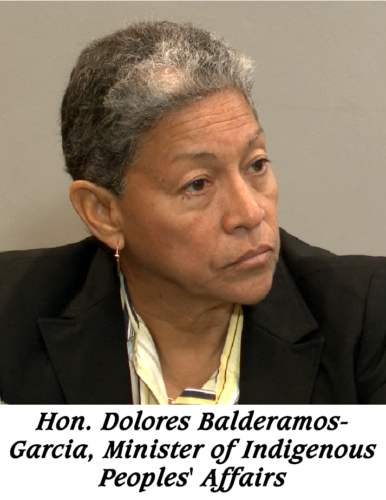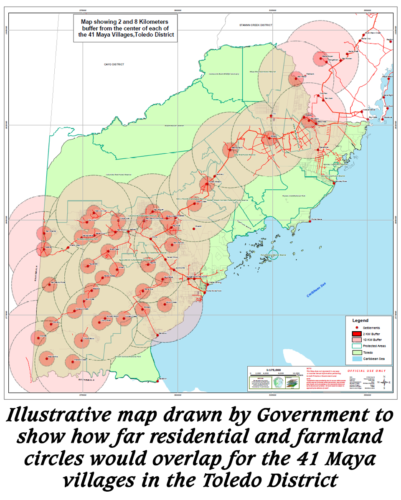Photo: Andrew Marshalleck, S.C. – Representing GoB in the Maya Land Rights case
Target to conclude CCJ Consent Order implementation at 10-year mark will be missed
BELIZE CITY, Thurs. Feb. 8, 2024
The Caribbean Court of Justice (CCJ) had given the parties in the Maya Land Rights case a deadline of April 2025 to conclude implementation of the April 2015 Consent Order. However, today, Senior Counsel Andrew Marshalleck, the lead attorney representing the Government in the case, told the media at a breakfast meeting in Belize City that there are delays. The cause is required consultation for the latest Maya Customary Land Tenure Policy, a copy of which, he says, has already been forwarded to the Court. He added that the Court is aware that “these further consultations that have been provoked, puts the schedule back.” The policy was to be sent to the legal draftspersons on January 15 so that legislation can be drafted to give effect to the policy. Marshalleck says if they are to consult the 41 Maya villages in the Toledo District on the land policy, it would require at least another three months, as the consultations can only be held on weekends.
The process has become highly contentious, and accusations are being made from both sides – the Government and the Toledo Alcaldes Association (TAA) as the appellants – that there is instigation, inflammatory language, and even misinformation to go around. Wil Maheia, as an observer from the Toledo District, has commented that the animosity on the ground currently between Maya and non-Maya is the worst he has ever seen.

The situation has bred mistrust between the two parties who are now separately holding media rounds on the policy. At today’s media breakfast meeting, Hon. Dolores Balderamos Garcia, Minister of Indigenous Peoples’ Affairs, affirmed that the Government will do its “level best to go back and visit as many villages as possible, even if it slows the process somewhat.” They will start on Sunday, February 11, with Big Falls, which is considered one of the villages that are not in favour of customary land tenure. This has garnered the accusation that the Government is expending efforts to pursue an anti-Maya land rights campaign when it refused to meet the villagers from a number of villages that the TAA gathered in Santa Elena Village on January 26. The Minister reiterated that it would have been counterproductive to attend what she called a “ra-ra rally” and get into a shouting match.
For the TAA, the request stands that the Government explain its communal land tenure recognition proposal directly to the communities. The Association is now concerned about what will be the schedule of community consultations, and if all villages will be reached. We were reminded that on a previous occasion when the Minister and her team set out to go into the villages, they only ended up reaching a few. Recognizing the lengthy process, the Government then decided to zone the villages and meet only with village leaders in Punta Gorda.
Today, Marshalleck set out to explain the controversial customary land tenure recognition proposal that features villages, by a majority vote, deciding to apply for an automatically recognized circular space of a radius of 1-3 kilometers from the center of the village. The policy, he says, provides for the application for farming space outside the circle, but evidence of continuous use for 30 years would have to be proven. He says this can be done via the same requirements as under the Registered Lands Act, including photographs, land tax receipts, confirmation of occupation from neighbours, etc. According to Marshalleck, the benefit of not including the farmlands in the circle is that “it gives the flexibility of some sort of hybrid arrangement where you keep the residences communal, but you allow farmlands to be developed with access to the financial resources of the modern banking system.” That means residential spaces would fall within communal lands, but farmlands could be privately titled.
In applying for the additional space, Marshalleck says the village has to notify third parties and neighboring villages of their application; and if there are competing interests, the matter would be taken before a specialized tribunal for resolution. As to what would happen with titles currently held by third parties in areas that would fall in the circle, the draft policy states under General Guiding Principle No. 7: “All individual titles issued in favour of private persons within the said circular area shall be extinguished in favour of Maya Customary Land Tenure on registration. Village members whose land titles are so extinguished shall be entitled to a refund of any purchase price or rents paid to the Government for their titles together with reasonable interest thereon. Third parties, other than village members, whose titles are extinguished shall be entitled to compensation in accordance with the Constitution and in accordance with procedures and principles set forth in the legislation. Such village members and third parties may make a claim against a public fund, separate and distinct from the Consolidated Revenue fund, to be known as Maya Customary Land Tenure Compensation Fund for the payment of compensation.”

The Government has drawn up an indicative map to show overlaps and how large outer circles would be if farmlands would be automatically recognized as part of Maya customary land tenure, followed by areas for hunting, fishing, gathering forest resources, etc. A second indicative map drafted by the Government shows everything they believe is “subject to claim.” According to Marshalleck, only a few areas including Punta Gorda, Barranco and Punta Negra are outside of what is being claimed. He insists that the illustrative maps are not being shared to inflame the situation, but only to impress upon people that a lot is at stake. Marshalleck says the Maya have not made a working alternative proposal, and highlighted that in a number of years, only 3 villages have completed demarcation of their village boundaries.
The next monitoring hearing of the CCJ for the Maya Land Rights case is in April 2024.

